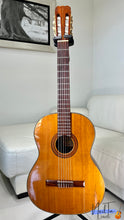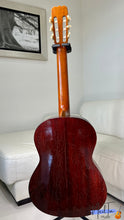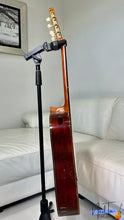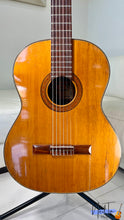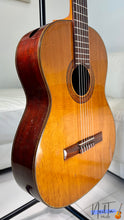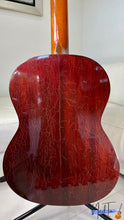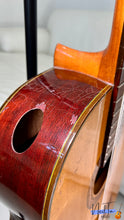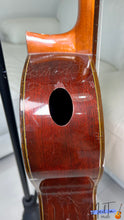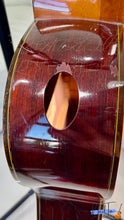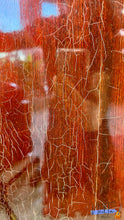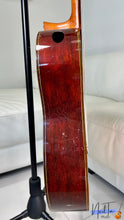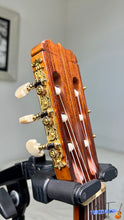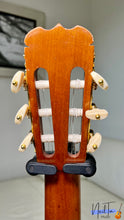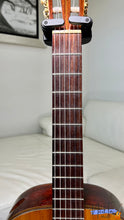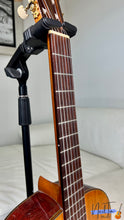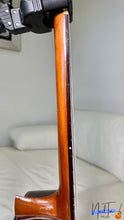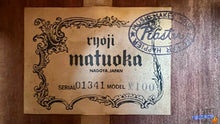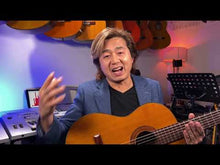
This guitar was top of the range back in the 1960s. It was made in October 1963 in Nagoya, Japan.
The original price of this guitar was 100,000 Japanese Yen when the average annual income of an average Japanese worker was 50,000 Yen. That's like 2 years' wage!!!
The solid high grade spruce top has matured nicely and like a seasoned wine, it has a mellow and complex character.
The sound is beautifully balanced between the basses and the trebles. You can hear all the overtones and harmonics, like a WWII tube microphone.
This guitar has been through many hands that have helped shaped its complex sound. Unfortunately, it has 2 cracks which have been repaired by a previous owner, and which I have not repaired because I wanted it to show its age. The cracks have no effect on the tone of the guitar, to the contrary, they may have contributed to making its sound unique.
I have tuned the top to the note A so the whole guitar is now more resonant and it is even more pleasing to listen to.
The sound port lets out the high frequencies and harmonics making the sound clear with more presence. It also allows the player to hear what the audience hears and gives him a true representation of his performance.
The back has typical crack patterns of natural finish such as oil and shellac.
I would not cover it with polyurethane or nitro as these types of finishes will dampen the sound, instead, I have decided to leave the original finish as is to retain the guitar's unique sound as well as highlight the guitar's age and history.
The tuners from the 1960s were all worn out so I replaced them with good quality concert guitar tuners.
I have used this guitar to produce music for people as it comes through in the mix better than many other guitars. I never intended to put it on the market until now.
I had the opportunity to compare it with a client of mine who had a Yamaha GC-82 classical guitar worth over $15000. I still prefer this guitar. And that's also the reason why I have kept it until now.
It comes with a brand new hard case.






















